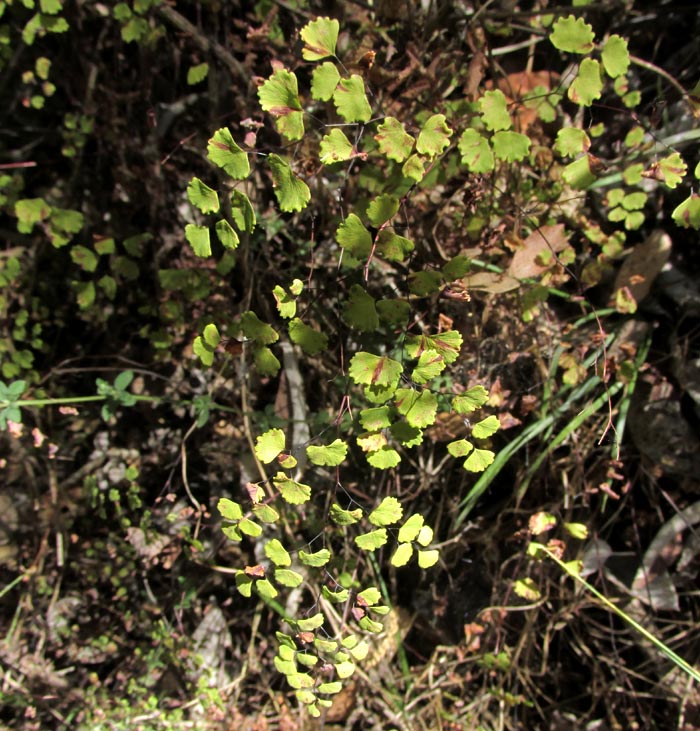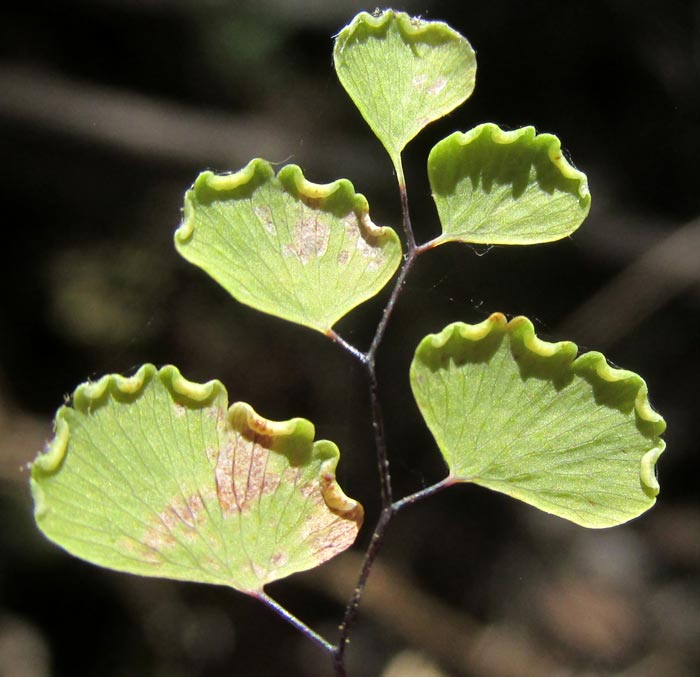Excerpts from Jim Conrad's
Naturalist Newsletter
entry from field notes dated April 16, 2022, taken in disturbed/reforesting borderline cloudforest within 1km of Valle de los Fantasmas, elevation ±2,320m (7600 ft), with limestone bedrock; about 40kms (24 miles), straight-line, ESE of San Luis Potosí, San Luis Potosí state, MÉXICO, (N22.06°, W100.62°)
ADIANTUM POIRETII

On a steep outcrop of limestone along the walls of a shallow sinkhole, a maidenhair fern seemed different to others I've seen. That's it above. The leaflets, or pinnules, had oddly turned-under lobes, as shown below:

Maidenhairs, genus Adiantum, shelter their spore-producing sporangia beneath curled-under pinnule margins, but this one was doing it in an unusual way.
I had problems identifying this species. It wasn't until the pictures were uploaded to the iNaturalist website that user "mwtreftig," who specializes in studying maidenhairs, recognized ADIANTUM POIRETII, sometimes known as the Mexican Maidenhair. It occurs in upland habitats ranging from stream edges and roadsides to canyon walls and rocky talus, and open areas to high-elevation fir forests.
Despite its English name of Mexican Maidenhair, it's native throughout much of the tropical and subtropical Americas, as well as parts of Africa and occurs in India and some other places as well.
In the 2006 study by A. Benjamin and V.S. Manickam entitled "Medicinal pteridophytes from the Western Ghats," it's reported that leaves of Adiantum poiretii are used to cure coughs, fever, diabetes and skin diseases in the Philippines.